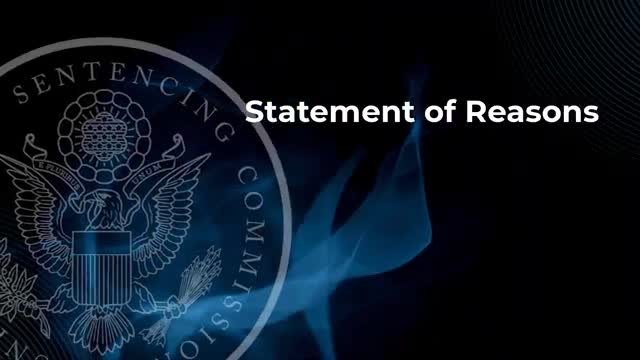US Sentencing Commission revises statement of reasons form effective November 2025
October 02, 2025 | United States Sentencing Commission, United States Courts, Judiciary, Federal
This article was created by AI summarizing key points discussed. AI makes mistakes, so for full details and context, please refer to the video of the full meeting. Please report any errors so we can fix them. Report an error »

In a recent government meeting, officials discussed significant updates regarding the Statement of Reasons Instruction, a crucial document in the U.S. sentencing process. This meeting highlighted the importance of timely and accurate submissions of key documents by courts, which are essential for data collection and research that informs policymaking.
The U.S. Sentencing Commission reported an impressive 99.9% submission rate for these documents, underscoring the dedication of court officials in fulfilling their responsibilities. Among these documents is the Statement of Reasons, also known as AO Form 245, which outlines the rationale behind sentencing decisions, particularly when sentences deviate from established guidelines.
A major change discussed during the meeting is the revised Statement of Reasons form, set to take effect on November 1, 2025. This revision reflects a shift in the sentencing process, as the Commission has decided to eliminate the concept of departures from the three-step sentencing process that has been in place since the Supreme Court's Booker decision in 2005. The Commission noted a trend where courts increasingly favored variances over departures, prompting this simplification of the guidelines.
However, there is one notable exception to this change: departures under Section 5K1.1, which pertains to providing substantial assistance. This exception remains intact, ensuring that courts can still account for significant cooperation from defendants in their sentencing decisions.
The meeting also provided a detailed overview of the revised form, which consists of eight sections. Each section is designed to guide courts in documenting their findings accurately. For instance, Section 1 allows courts to either adopt the pre-sentence investigation report as is or with modifications, requiring careful documentation of any changes made.
Overall, the discussions during this meeting not only emphasized the importance of the Statement of Reasons in the sentencing process but also highlighted the ongoing efforts to streamline and improve the judicial system. As the implementation date for the revised form approaches, courts will need to adapt to these changes, ensuring that they continue to provide clear and comprehensive justifications for their sentencing decisions.
The U.S. Sentencing Commission reported an impressive 99.9% submission rate for these documents, underscoring the dedication of court officials in fulfilling their responsibilities. Among these documents is the Statement of Reasons, also known as AO Form 245, which outlines the rationale behind sentencing decisions, particularly when sentences deviate from established guidelines.
A major change discussed during the meeting is the revised Statement of Reasons form, set to take effect on November 1, 2025. This revision reflects a shift in the sentencing process, as the Commission has decided to eliminate the concept of departures from the three-step sentencing process that has been in place since the Supreme Court's Booker decision in 2005. The Commission noted a trend where courts increasingly favored variances over departures, prompting this simplification of the guidelines.
However, there is one notable exception to this change: departures under Section 5K1.1, which pertains to providing substantial assistance. This exception remains intact, ensuring that courts can still account for significant cooperation from defendants in their sentencing decisions.
The meeting also provided a detailed overview of the revised form, which consists of eight sections. Each section is designed to guide courts in documenting their findings accurately. For instance, Section 1 allows courts to either adopt the pre-sentence investigation report as is or with modifications, requiring careful documentation of any changes made.
Overall, the discussions during this meeting not only emphasized the importance of the Statement of Reasons in the sentencing process but also highlighted the ongoing efforts to streamline and improve the judicial system. As the implementation date for the revised form approaches, courts will need to adapt to these changes, ensuring that they continue to provide clear and comprehensive justifications for their sentencing decisions.
View full meeting
This article is based on a recent meeting—watch the full video and explore the complete transcript for deeper insights into the discussion.
View full meeting